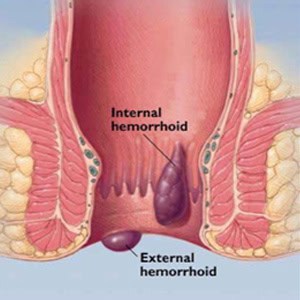Photo credit: avrupacerrahimerkezi.com

Photo credit: drmatthewlublin.com
More than half of all people will at some point develop symptomatic haemorrhoids. Haemorroids are actually anal cushions which are specialized, highly vascular, connective tissue and smooth muscles in the submucosal space of anal canal. Its bleeding is bright red because of presinusoidal arterial bleeding. It is important for continence. Haemorroids are divided into internal and external.
Haemorroids are divided into internal and external. External haemorrhoids are below dentate line and has somatic innervations. Predisposing factors include constipation, increased intra-abdominal pressure, aging, spending excessive periods of time on the toilet and use of western toilet. Human beings are designed to evacuate waste in the squatting position. In the sitting position, the colon system is in the continence mode, and it is difficult to evacuate waste effectively, resulting in the need to strain.

Photo credit: Healthwise, Incorporated
First degree haemorroid bulge into lumen of anal canal resulting in painless bleeding at end of daefecation. Second degree has pruritus ani and reduce spontaneously. Third degree has mucous discharge with sense of incomplete evacuation and reduced manually. Fourth degree is permanently prolapsed and irreducible.
Haemorroids can become thrombosed causing acute pain, tender, bluish lump at distal anus with ulceration and bleeding. The end result is skin tags. Differential diagnosis includes anal fissure, perianal abscess, proctitis, Inflammatory bowel disease (IBD), Colorectal cancer and anal Polyps. Relevant investigations include anoscopy, sigmoioscopy and colonoscopy.
Medical management includes avoidance of constipation and hard stools, minimize straining the stool, dietary and lifestyle modifications, fluid and fiber in diet. Supplemental fibre agents add moisture to stool. Sitz bath (warm 40 C – degree symbol) with soaking time limited to 15 minutes, ice packs and drugs like daflon (Flavonoids) gives acute symptoms relief by decreasing capillary permeability and increasing lymphatic transport.
First degree haemorrhoids can be treated with rubber band ligation as an office procedure. Surgical modalities include open haemorroidectomy, sclerotherapy, harmonic ultrasonic scalpel hemorrhoidectomy, stapled haemorrhoidopexy and Laser Haemorrhoidopexy. Thrombosed external haemorrhoids presents itself as painful perianal mass that peaks in 48 hours and subsides after 3 days. Treatment is pain relief. Severe pain might require excision of thrombus under anaesthesia.
Share:
Was this article helpful?
Articles and Video
Learn more about General Surgery And Colorectal Surgery in Columbia Asia
Learn MoreShare:
Was this article helpful?
Health Packages
Elevate your health with tailored health packages at Columbia Asia Hospital. Take charge of your health journey today.

